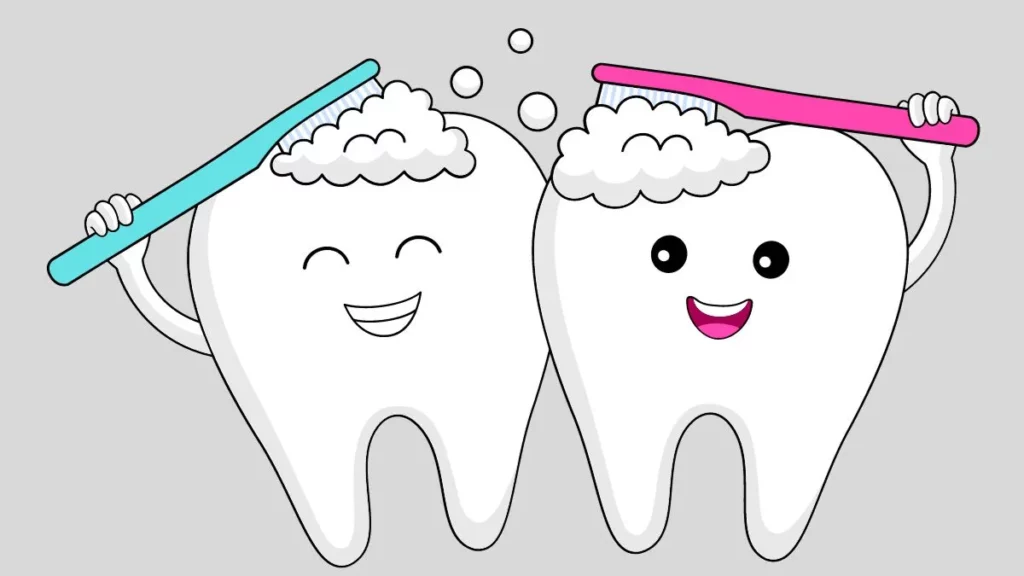In addition to their structural and functional importance, teeth and bones play key roles in human anatomy. Because teeth are so versatile and have such a distinct structure, the answer to the apparently simple question of whether they are bones is actually somewhat complicated.
Contents
Composition of Teeth
The intricate anatomy of a tooth is composed of both hard and soft components. The outermost layer, known as enamel, protects the dentin and cementum layers, which are softer and serve to shelter the tooth roots from the hard tissues. Bones, on the other hand, are a combination of minerals and collagen that are both robust and malleable.
Hard Tissues
The presence of hard tissues gives teeth their characteristic hardness and resilience. Enamel, the hardest substance in the body, protects teeth from the wear and tear that comes from biting and chewing.
Soft Tissues
The spongy, gooey stuff inside bones called marrow is responsible for making blood cells and storing fat. Although teeth lack this marrow, they do include a pulp chamber that serves as a home for the tooth’s nerves and blood vessels.
Bone Structure
To differentiate between teeth and bones, one must look at their structural differences. Teeth do not have a marrow cavity, which is located in the middle of bones. The design of the body’s many parts is a reflection of their individual functions.
Differences Between Teeth and Bones
Remodeling the skeleton is an ongoing process that helps keep bones strong and adapts to the body’s changing needs. However, teeth have a limited capacity for regeneration, and their fundamental structure remains constant.
Functionality of Teeth
Teeth are primarily designed to mechanically break down food. Mechanically breaking down food through biting, chewing, and grinding is the first step in digestion. Teeth are shaped and positioned in the mouth in a way that allows them to cut, shred, and crush food.
Dental Anatomy
Distinct characteristics distinguish teeth from bones, as can be shown by analyzing dental anatomy. In addition to the intricate arrangement of dentin, enamel, and cementum, the pulp chamber and dental pulp are essential components that define the distinctive function of teeth.
Similarities with Bones
The classification of teeth and bones is not entirely clear due to the similarities and differences between the two.
Calcium Presence
Teeth and bones both contain calcium, which makes them stronger. While the specific distribution and arrangement of calcium crystals impact their general structure and function, this is not always the case.
Growth and Development
Teeth and bones also develop through time, but in different ways. Bones, in contrast to teeth, which grow in a regular sequence (deciduous, then permanent), never stop growing and changing.
Dental Health Importance
Maintaining good oral hygiene is similar to maintaining good overall health. Neglecting your teeth and gums can lead to cavities, gum disease, and other serious health issues. The most effective method for preventing cavities is to brush and floss your teeth on a regular basis.
Common Misconceptions
Some common misconceptions about the anatomy of the jaw and teeth must be dispelled before the true structure can be understood. Debunking misconceptions, such as the idea that teeth are bones, dispel incorrect assumptions regarding the health of the teeth and bones.
Oral Care Practices
Proper dental hygiene involves more than just brushing and flossing. A healthy diet, regular dental checkups, and other lifestyle choices all contribute to pearly whites. A person’s dental health can be significantly improved by adopting these habits.
Impact on Overall Health
Learn more about the connections between your dental and general well-being. It is clear from the correlations between gum disease, tooth decay, and other health issues that regular dental checkups are crucial to overall wellness.
Dental and Skeletal Systems Interaction
The interplay between the teeth and the bones is dynamic and ever-changing. The connectedness of these critical body systems and the potential impact of issues with one on the others.
Evolutionary Perspective
Discover the evolution of our skeletal and dental structures through time as seen through the lens of our requirements. The teeth’ and bones’ functional roles are illuminated by the evolutionary context.
Maintaining Healthy Teeth
Look into some easy ways to keep your teeth healthy. In order to achieve good oral hygiene and prevent dental disorders, it is important to stress the significance of a balanced diet, positive lifestyle choices, and regular dental exams.
Dental Checkups
In order to keep your mouth healthy, it is crucial that you visit the dentist regularly. In order to prevent cavities and other oral health issues from worsening over time, it is important to have regular exams.
Conclusion
Despite looking similar to bones, teeth actually have very diverse functions, so it’s helpful to have a thorough understanding of both. Efficiency in dental care and overall health are both enhanced by this knowledge. Despite their inseparable bond, teeth and bones still have separate but complementary functions that must be considered while providing medical care.

